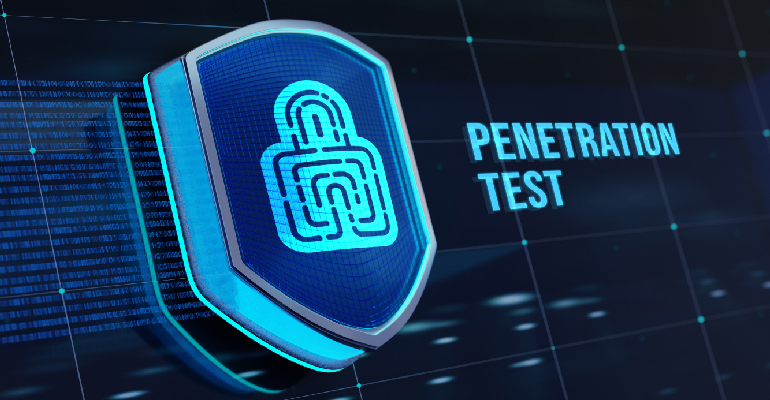Protecting sensitive information and ensuring the integrity of systems is paramount. Organizations are increasingly employing various methods to uncover and mitigate vulnerabilities before malicious actors can exploit them. Among these methods, penetration testing and ethical hacking stand out as two of the most effective strategies. However, despite their shared goal of enhancing security, these approaches often need to be understood or clarified.
This blog aims to demystify the distinctions between penetration testing and ethical hacking. We will talk in detail about what each entails, their respective benefits, and practical applications, helping you determine which approach best suits your organizational needs.
What is Penetration testing?
Penetration testing, or pen-testing, is a cybersecurity technique used to evaluate the security of an information system by simulating real-world attacks. This process identifies vulnerabilities that could be exploited by malicious hackers, allowing organizations to address these weaknesses before they are compromised.
Objectives of Penetration Testing
- Identify Security Flaws: Pinpointing specific vulnerabilities in the system that could be exploited.
- Evaluate Defensive Mechanisms: Assessing the effectiveness of existing security measures.
- Measure Potential Impact: Understanding how much damage a breach could cause.
- Ensure Compliance: Meeting industry standards and regulatory requirements like PCI DSS, HIPAA, and GDPR.
- Enhance Security Posture: Providing actionable insights to strengthen the security of the system.
What is Ethical hacking?
Ethical hacking involves authorized individuals, known as ethical hackers or white-hat hackers, who use their expertise to help organizations improve their overall security. Unlike malicious hackers, ethical hackers work with the permission of the organization to uncover vulnerabilities, assess risks, and strengthen defenses against potential cyber threats.
Key Aspects:
- Objective: To enhance the organization’s security posture by identifying and addressing weak points in systems, networks, and processes.
- Methodology: Comprehensive and ongoing, involving various security assessments such as penetration testing, code reviews, risk assessments, and more.
- Scope: Broad, encompassing all elements of an organization’s IT infrastructure, including hardware, software, and human factors.
Key difference between pen-testing and ethical hacking
Penetration testing focuses on identifying and exploiting specific security weaknesses within a limited scope and timeframe. In contrast, ethical hacking is a comprehensive, ongoing effort to enhance the overall security framework of an organization. Here’s a table summarizing the main distinction:
| Feature | Pen-Testing | Ethical Hacking |
| Scope | Focused on specific systems, applications, or networks based on predefined agreements | Broad, encompassing a comprehensive assessment of security vulnerabilities across the organization |
| Methodology | Follows a structured approach with predefined rules and limitations | More flexible, utilizing various methodologies to identify vulnerabilities |
| Knowledge requires | Deep understanding of specific testing tools and techniques | Broad knowledge of cybersecurity, including offensive and defensive techniques |
| Reporting | Focuses on detailed reports outlining vulnerabilities, risks, and remediation steps | May include broader security recommendations beyond specific vulnerabilities |
| Time and Cost | Typically faster and less expensive due to a narrower scope | Can be more time-consuming and expensive due to the broader scope |
| Example | Simulating a phishing attack on a specific employee group | Identifying weaknesses in an organization's physical security measures |
Benefits of both penetration testing and ethical hacking
Both pen-testing and ethical hacking offer significant advantages for improving an organization’s cybersecurity posture. Here’s a breakdown of their key benefits:

Pen-Testing Benefits:
- Targeted Vulnerability Identification: Pen-testing focuses on specific areas, allowing for a deep dive into potential weaknesses. This targeted approach is efficient and cost-effective for identifying and prioritizing critical vulnerabilities.
- Improved Security Controls: Pen-testing reports provide actionable insights and recommendations for remediation, helping organizations strengthen their security controls and address specific gaps.
- Compliance: Regular pen testing can be essential for meeting industry standards and regulations that mandate security assessments.
- Reduced Risk: Pen-testing helps organizations reduce the risk of successful cyberattacks and data breaches by proactively identifying and fixing vulnerabilities.
- Increased Confidence: Successful pen tests provide valuable assurance that critical systems and data are protected against common threats.
When to use penetration testing?
- Regular Assessments: For routine checks of specific systems, applications, or networks (e.g., quarterly tests of web applications).
- Compliance Requirements: When regulations mandate security assessments (e.g., PCI-DSS compliance for credit card processing).
- New System Deployments: Before launching new systems or applications, identify vulnerabilities early.
- Security Patching Verification: To confirm that security patches have effectively addressed previously identified vulnerabilities.

Ethical Hacking Benefits:
- Comprehensive Security Assessment: Ethical hacking goes beyond specific vulnerabilities, offering a broader perspective on an organization’s overall security posture. This can uncover weaknesses in physical security, social engineering tactics, and incident response procedures.
- Uncovering Unforeseen Threats: Ethical hackers employ creative and diverse methodologies, potentially discovering vulnerabilities that traditional pen-testing might miss.
- Improved Security Awareness: Ethical hacking can simulate real-world attack scenarios, raising employees’ awareness of potential security risks and best practices.
- Preparation for Advanced Attacks: By employing methods used by sophisticated attackers, ethical hacking helps organizations better prepare for complex and targeted cyber threats.
- Strategic Security Planning: A comprehensive ethical hacking exercise can inform long-term security strategies and resource allocation to address the organization’s most critical security gaps.
When to engage ethical hackers?
- Comprehensive Security Reviews: When a more holistic assessment of security posture is needed across the organization.
- Mergers & Acquisitions: To evaluate potential security risks before integrating new systems or networks.
- Advanced Threat Concerns: When facing concerns about sophisticated or targeted cyberattacks.
- Security Awareness Training: To simulate real-world attack scenarios for employee training purposes.
- Long-Term Security Strategy: To inform strategic security planning and resource allocation.
Choosing the right approaches
StrongBox IT understands navigating cybersecurity options can be overwhelming. Deciding between pen-testing and ethical hacking should be easy. We offer both! Penetration testing acts like a targeted security guard, focusing on specific systems and identifying critical vulnerabilities – perfect for regular checkups. Ethical hacking, on the other hand, is a comprehensive security sweep, uncovering weaknesses across your entire IT infrastructure. Think of it as a deep-dive security assessment. No matter your needs, StrongBox IT has the right approach to keep your organization safe. Contact us today for a free consultation, and let our experts help you choose the perfect cybersecurity shield!





